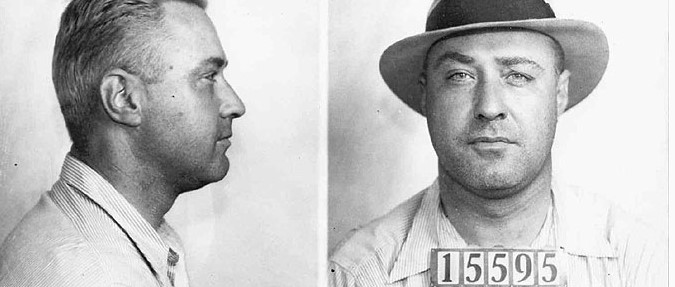Texas is so big that its long history of crime—from outlaw days to today—is damn near impossible to know completely. The hard part of compiling a list of 10 obscure Texas crime facts is eliminating dozens of others! But here’s a fascinating collection to keep even the most dedicated crime buff busy for a while.
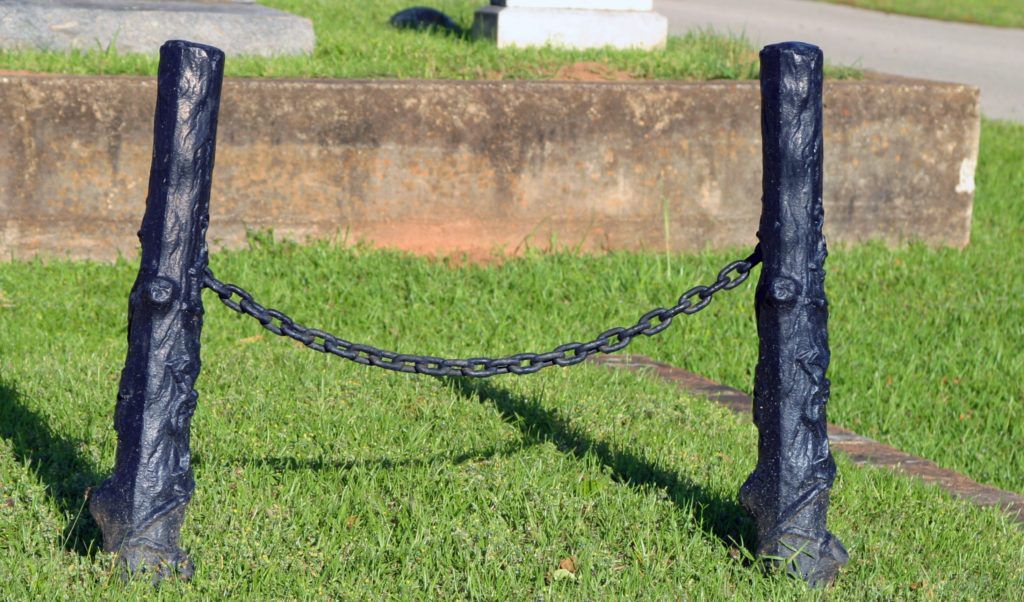
10. FEUDING FATHERS TOGETHER FOREVER
In the 1800s, two feuding outlaws named Robertson and Rose (their first names were never recorded) killed each other in a gunfight. The local sheriff was so annoyed by their long-simmering bad blood that he ordered their corpses to be buried side-by-side in Oakwood Cemetery in Jefferson TX, and their graves to be literally chained together for eternity — which they still are today.
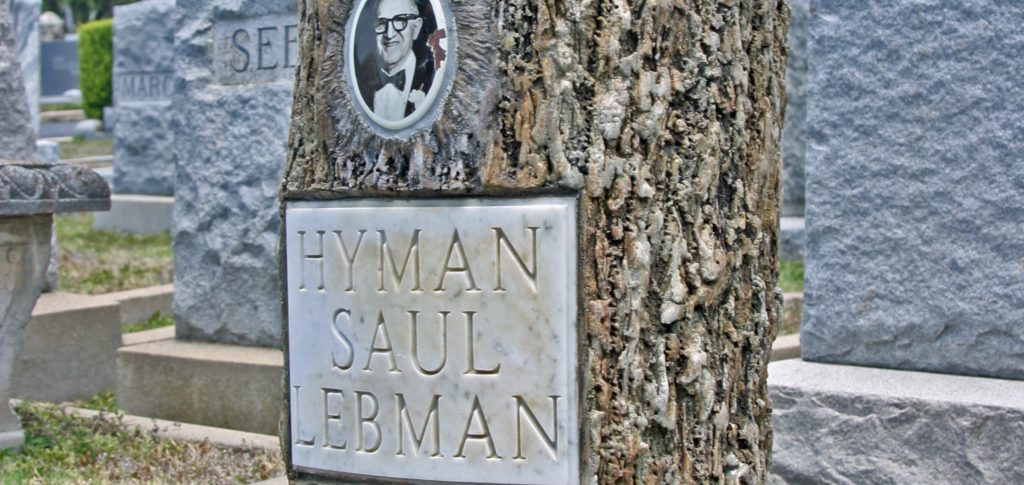
9. DILLINGER’S GUNMAKER
It isn’t known how Hyman S. Lebman befriended hoodlum Lester Gillis, aka Baby Face Nelson, but by the 1930s Lebman was supplying Baby Face with Thompson submachine guns and full-auto conversions of many handguns. Through Nelson, many of these illegal weapons got into the arsenals of Al Capone, Pretty Boy Floyd, the Barker-Karpis gang and Baby Face’s buddies in the John Dillinger gang.
Baby Face and other Dillinger gangsters made several trips to San Antonio for guns. Once, Baby Face and his wife even shared Thanksgiving dinner with fellow gangster Homer Van Meter at Lebman’s modest home.
The gunsmith eventually turned snitch, but his troubles with the law would last for almost 50 years because of his association with the gangsters. Some of Lebman’s modified guns are still displayed at the FBI headquarters in Washington D.C.
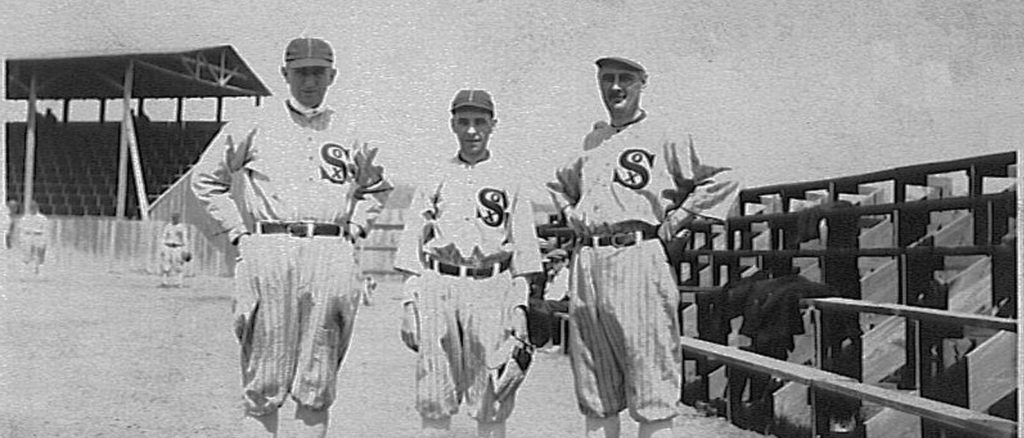
8. BLACK SOX IN SPRINGTIME
In March 1919, the Chicago White Sox gathered for spring training in Mineral Wells TX. Stars like “Shoeless Joe” Jackson, Eddie Collins, Eddie Cicotte, and Lefty Williams were all there, just two seasons after they’d won the World Series. Owner Charlie Comiskey believed the town’s therapeutic waters and spas would be good for his players, already expected to go to the 1919 World Series.
That season, eight players — Jackson, Cicotte, Williams, Chick Gandil, Swede Risberg, Hap Felsch, Fred McMullin, and Buck Weaver — conspired with big-time gamblers to lose the Series. They were promised $100,000, but most of the money was never paid.
In 1920, those eight “Black Sox” were acquitted in a criminal trial, but banned for life by Baseball Commissioner Kennesaw Mountain Landis after the biggest sports scandal in American history.
The White Sox never went back to Mineral Wells but the team moved its spring training to Waco in 1920, Waxahachie in 1921, and Seguin in 1922-23.
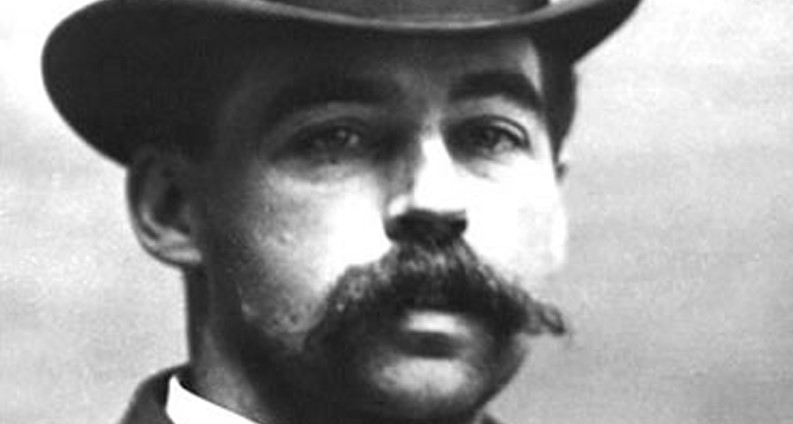
7. SERIAL KILLER H.H. HOLMES’ MURDER HOUSE
Although he wasn’t America’s first serial killer—as some have said— Herman Mudgett (aka Dr. H.H. Holmes) was certainly among our most ghastly psychopaths … and had a Fort Worth connection.
The smoothly seductive swindler Holmes (1860-1896) admitted to 27 murders, but his toll could be more than 200. Much of his dirty work happened in a three-story Chicago “Murder Castle,” specially built for his killings.
In 1893, Holmes met a young Texas heiress named Minnie Williams, who deeded a valuable property to him. Minnie soon disappeared, although her keepsake watch was later found in the ashes of Holmes’ crematory.
Holmes fled to Fort Worth, where he planned to build another “murder castle” on Minnie’s property at Second and Rusk (now Commerce) streets. Holmes built his new three-story, brick horror house on the southwest corner. After his arrest, police searched the unfinished Fort Worth house. They found many of the same features as his Chicago “murder castle”: a chute from the third floor to the basement, a room with 12 different doors, a modified sewer main, a man-sized wooden box, and other “curiosities.”
H.H. Holmes is a central figure the true-crime The Devil in the White City by Erik Larson (2003, Random House)
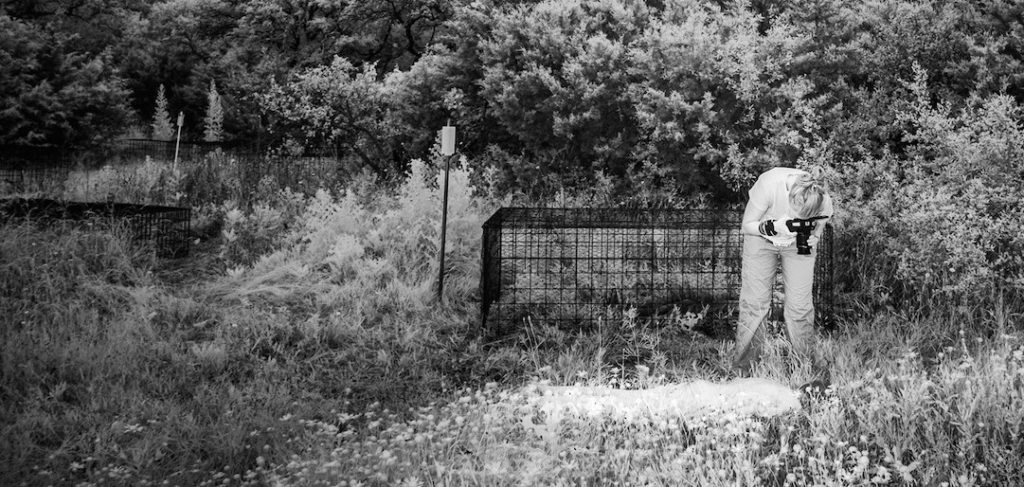
6. TEXAS BODY FARM
The largest of only three such “body farms” in the United States, Texas State University’s 10-acre Forensic Research Facility studies human decomposition for clues that will help criminal investigators determine when and how people died. Modeled after Dr. Bill Bass’ groundbreaking “body farm” in Knoxville TN, forensic anthropology students measure decay under different scenarios, such as being buried at different depths, in vehicles, under water, in varied Southwestern weather conditions and seasons. Up to six corpses (all willed to the San Marcos school) are being studied at any given time, and the facility offers regular training to death investigators.
The ranch was bequeathed to Texas State University by the estates of Joe and Harry Freeman, wealthy Texas entrepreneurs. If you wonder whether they’d approve of their ranch being used, in part, to study decaying bodies, don’t fret. J. Edgar Hoover was a frequent visitor, and for many years, the Freemans hosted annual FBI deer hunts. The body farm is off-limits to all but approved visitors.
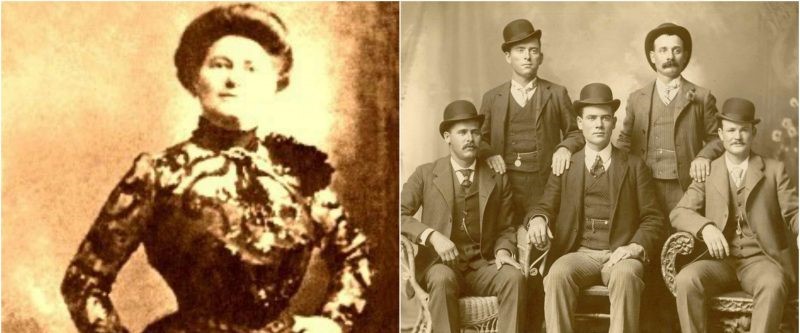
5. BUTCH AND FANNIE’S BIKE RIDE
British-born Fannie Porter was one of the Old West’s most famous madams. By age 15, she was a prostitute in San Antonio, and by age 20, owned her own brothel, where her girls were known to be among the prettiest, cleanest and best dressed. Today, the original structure — which became a Catholic convent after Fannie retired in 1914, and is said to be haunted — is San Antonio’s Boys Town current building.”
More interestingly, San Saba Street (now Urban Loop) which ran in front of the old brothel, was just a dirt where Butch Cassidy gave Fannie rides on the handlebars of his borrowed bicycle — the inspiration for a famous scene in the 1969 film Butch Cassidy and the Sundance Kid.
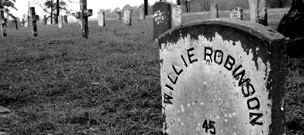
4. PECKERWOOD HILL
Captain Joe Byrd Cemetery, aka Peckerwood Hill, is the Texas Penitentiary’s cemetery in Huntsville TX. More condemned men (180) are buried here than 29 other states have executed in their entire history … all together. Most share a nameless tombstone marked only with their inmate number, a death date and a simple “X” … executed.
The more than 3,000 dead criminals on Peckerwood Hill are past caring. The 22-acre potter’s field, since these dead prisoners had neither money nor family willing to claim their corpses, is the final resting place for Texas serial killers Henry Lee Lucas and Kenneth McDuff, and prison rodeo clown Lee Smith, whose epitaph reads: “At Rest, In Memory of Rodeo Pals.” It is also the former resting place of Kiowa chief Satanta, who was imprisoned in 1874 for leading insurgent raids on Texas settlers and inspired the character Blue Duck in Larry McMurtry’s Lonesome Dove, committed suicide by leaping from a prison window and was buried on Peckerwood Hill in 1878. In 1963, his grandson claimed his bones and reburied them in Fort Sill OK.
As always, a grave is hand-dug by inmates, sometimes before there’s a dead man to fill it. Funerals always begin at 8:30 a.m. The dead convict is buried in his release clothes, a work shirt and khaki pants. Four inmates act as pallbearers.
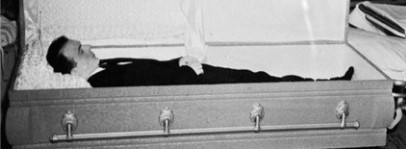
3. DIGGING UP LEE HARVEY OSWALD
Esteemed British journalist Michael Eddowes published a 1976 book that detailed a strange theory: A “look-alike” Soviet agent had killed Kennedy, not Lee Harvey Oswald. Eddowes believed the KGB had trained a body-double named Alec to assume Oswald’s identity. This agent returned to America in 1962 to blend in, wait for the right moment, kill the president, and die in the chaos that followed.
Evidence of the switch? Eddowes lists several specific “inconsistencies” between Oswald’s Marine Corps medical records and his autopsy report.
Eddowes wasn’t alone in his suspicions. As odd as it sounds, FBI Director J. Edgar Hoover himself and other government officials feared in 1960 the Russians might try to replace the defector Oswald with a deadly imposter.
Eddowes proposed that Oswald’s body should be exhumed from his Fort Worth TX grave to prove that it was a doppelganger Soviet substitute named Alec.
In 1981, Oswald was indeed exhumed by a team of some of the world’s best forensic scientists. Who was buried in Oswald’s grave? No spoilers here!
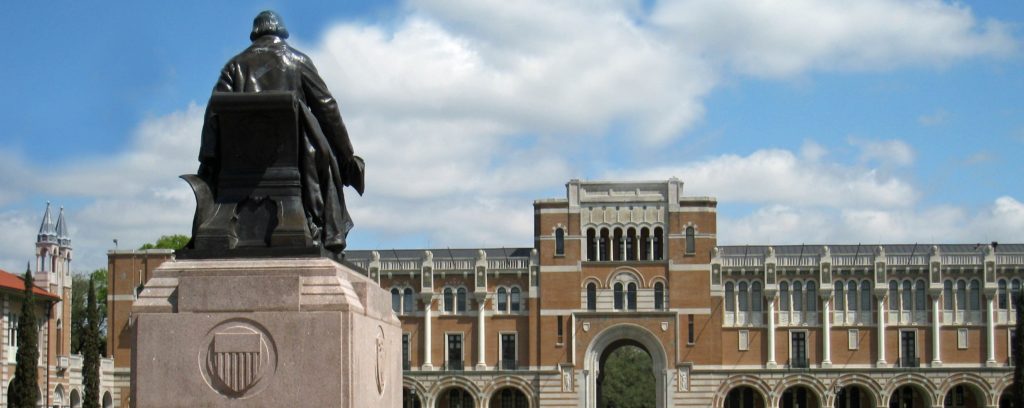
2. WHO’S BURIED IN RICE’S STATUE?
A visionary entrepreneur, William Marsh Rice (1816-1900) was one of Houston’s earliest movers and shakers — and one of its richest. He also dreamed of creating a college with money he made from oil, retailing and real estate. But some of his inner circle had different ideas for his money.
In 1900, Rice was murdered in his New York apartment by a greedy acquaintance. Rice was cremated and his ashes sealed beneath a heroic statue of him on the campus of Houston’s Rice University — established in 1904 with a $4.6 million endowment from his estate.
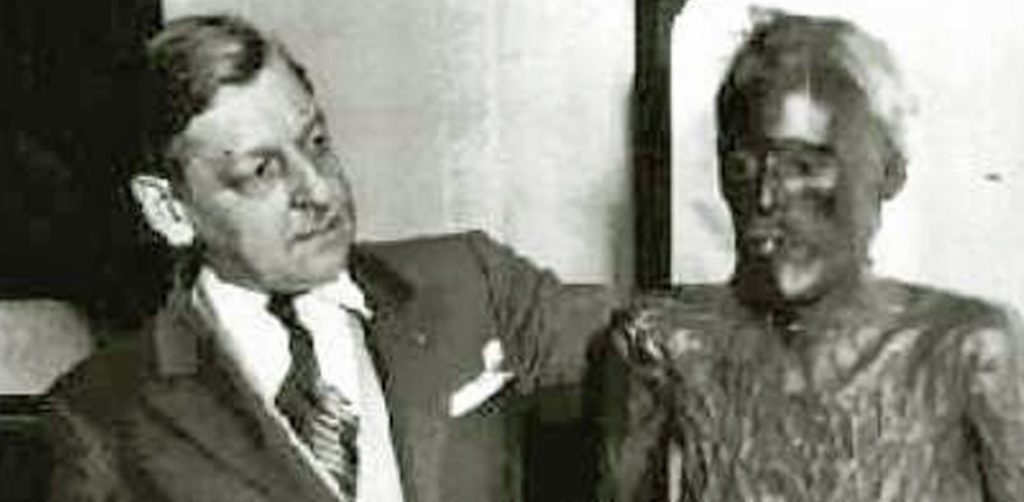
1. WHAT HAPPENED TO THE BOOTH MUMMY?
In 1870, five years after the Lincoln assassination, a young man named John St. Helen settled in Glen Rose T, where he was a bartender and acted in the local theater. In 1871, he popped up in nearby Granbury TX, where he befriended a local lawyer, who noticed that St. Helen drank himself silly every year on the anniversary of Lincoln’s murder. When he left town again, he reportedly left a pistol wrapped in a Washington newspaper dated April 15, 1865.
In 1903, an itinerant housepainter named David George committed suicide in Enid OK, where he’d confided in a local widow that he was, in fact, John Wilkes Booth. The coroner discovered George’s right leg had been broken just above the ankle years before, and he was born in the same year as Booth. Could he be … ?
George/St. Helen/Booth’s corpse was mummified and displayed for two years in the front window of an Enid funeral home until his old lawyer friend claimed the body and sent it on a carnival sideshow tour as the mummy of John Wilkes Booth.
In 1931, a team of doctors and detectives X-rayed the mummy. They allegedly found a broken leg and thumb, and a scar on the neck that matched wounds Booth was known to have suffered. Oddly, they also found a corroded signet ring in the mummy’s stomach — bearing the initial “B.” Suddenly, people began to wonder … could it be?
Alas, in 1973, the mummy vanished completely.
Bestselling true-crime writer Ron Franscell is the author of Alice & Gerald: A Homicidal Love Story and the Texas crime history, The Crime Buff’s Guide to Outlaw Texas, among others. He lives in San Antonio.
COVER IMAGE: Mugshot of George “Machine Gun” Kelly, who’s buried in Cottondale TX.
